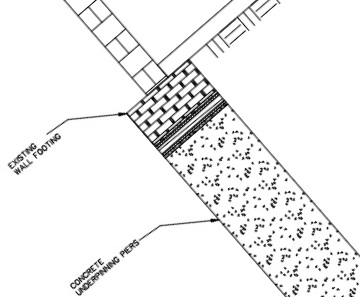One of the most common tools for managing risk associated with construction adjacent to existing structures is the pre-construction condition survey. In some circumstances, pre-construction surveys are required by law under building codes and they are typically required by contract on most large projects. However, pre-construction condition surveys are often procured as a commodity service. Consequently, a lot of pre-construction condition surveys are executed poorly and fail to provide the intended risk management benefit. Continue reading “Pre-Construction Surveys Should Not be a Commodity”
What a Building Owner Should Know About Underpinning
An environmental consultant I know once showed me a photograph of a deep excavation he had visited on a site tour. The excavation had required underpinning of a couple of brick, bearing wall buildings on the lot lines. Underpinning is the term applied to a variety of methods used to resupport a structure’s foundation, usually to a deeper bearing depth. Generally, underpinning is performed if the foundation system for an existing structure is compromised or if foundation support needs to be transferred to a deeper level to allow work that would otherwise cause foundation movement and damage to the structure. The latter scenario is common when a new building is built adjacent to an existing one. Owners of buildings that are to be underpinned as part of adjacent construction need to know what is involved. Underpinning by a third party constructor carries with it technical and legal implications and exposes the owner to risk that may not be managed by the adjacent construction project owner and their contractors and professionals in a manner optimal to the building owner.
Continue reading “What a Building Owner Should Know About Underpinning”

